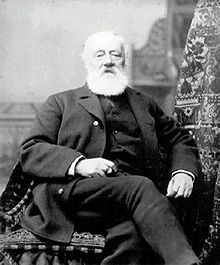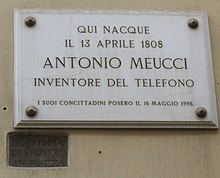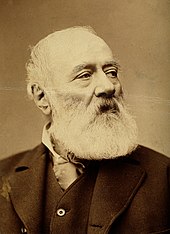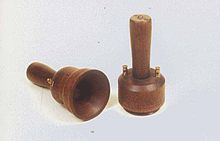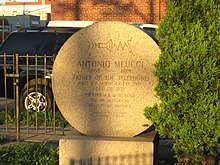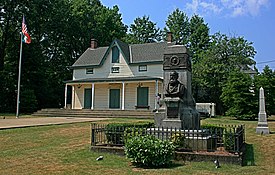CAVEAT
The petition of Antonio Meucci, of Clifton, in the County of Richmond and State of New York, respectfully represents:
That he has made certain improvements in Sound Telegraphs, ...
The following is a description of the invention, sufficiently in detail for the purposes of this caveat.
I employ the well-known conducting effect of continuous metallic conductors as a medium for sound, and increases the effect by electrically insulating both the conductor and the parties who are communicating. It forms a Speaking Telegraph, without the necessity for any hollow tube.
I claim that a portion or the whole of the effect may also be realized by a corresponding arrangement with a metallic tube. I believe that some metals will serve better than others, but propose to try all kinds of metals.
The system on which I propose to operate and calculate consists in isolating two persons, separated at considerable distance from each other, by placing them upon glass insulators; employing glass, for example, at the foot of the chair or bench on which each sits, and putting them in communication by means of a telegraph wire.
I believe it preferable to have the wire of larger area than that ordinarily employed in the electric telegraph, but will experiment on this. Each of these persons holds to his mouth an instrument analogous to a speaking trumpet, in which the word may easily be pronounced, and the sound concentrated upon the wire. Another instrument is also applied to the ears, in order to receive the voice of the opposite party.
All these, to wit, the mouth utensil and the ear instruments, communicate to the wire at a short distance from the persons. The ear utensils being of a convex form, like a clock glass, enclose the whole exterior part of the ear, and make it easy and comfortable for the operator. The object is to bring distinctly to the hearing the word of the person at the opposite end of the telegraph.
To call attention, the party at the other end of the line may be warned by an electric telegraph signal, or a series of them. The apparatus for this purpose, and the skill in operating it, need be much less than for the ordinary telegraphing.
When my sound telegraph is in operation, the parties should remain alone in their respective rooms, and every practicable precaution should be taken to have the surroundings perfectly quiet. The closed mouth utensil or trumpet, and the enclosing the persons also in a room alone, both tend to prevent undue publicity to the communication.
I think it will be easy, by these means, to prevent the communication being understood by any but the proper persons.
It may be found practicable to work with the person sending the message insulated, and with the person receiving it, in the free electrical communication with the ground. Or these conditions may possibly be reversed and still operate with some success.
Both the conductors or utensils for mouth and ears should be, in fact I must say must be, metallic, and be so conditioned as to be good conductors of electricity.
I claim as my invention, and desire to have considered as such, for all the purposes of this Caveat,
The new invention herein set forth in all its details, combinations, and sub-combinations.
And more especially, I claim
First. A continuous sound conductor electrically insulated.
Second. The same adapted for telegraphing by sound or for conversation between distant parties electrically insulated.
Third. The employment of a sound conductor, which is also an electrical conductor, as a means of communication by sound between distant points.
Fourth. The same in combination with provisions for electrically insulating the sending and receiving parties.
Fifth. The mouthpiece or speaking utensil in combination with an electrically insulating conductor.
Sixth. The ear utensils or receiving vessels adapted to apply upon the ears in combination with an electrically insulating sound conductor.
Seventh. The entire system, comprising the electrical and sound conductor, insulated and furnished with a mouthpiece and ear pieces at each end, adapted to serve as specified.
In testimony whereof, I have hereunto set my hand in presence of two subscribing witnesses.
ANTONIO MEUCCI
Witnesses:
Shirley McAndrew.
Fred'k Harper.
Endorsed:
Patent Office
Dec. 28, 1871
